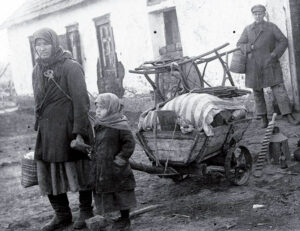 On 30 January 1930, the Political Bureau of the Central Committee of the Communist Party of the Soviet Union (Bolsheviks) decided to launch the largest resettlement operation in the entire history of the Soviet Union, still referred to today as the “kulak deportation”. To facilitate the implementation of the widespread collectivisation of farms, it was ordered that its biggest opponents – the so-called kulaks (rich farmers) – be deported along with their families. Within a few years, more than 2.3 million people were deported to northern Siberia and Kazakhstan under this decision.
On 30 January 1930, the Political Bureau of the Central Committee of the Communist Party of the Soviet Union (Bolsheviks) decided to launch the largest resettlement operation in the entire history of the Soviet Union, still referred to today as the “kulak deportation”. To facilitate the implementation of the widespread collectivisation of farms, it was ordered that its biggest opponents – the so-called kulaks (rich farmers) – be deported along with their families. Within a few years, more than 2.3 million people were deported to northern Siberia and Kazakhstan under this decision.
The Soviet government, the Council of People’s Commissars, prepared legal acts enabling the operation to be carried out but delegated its execution to field bodies. Wishing to please Moscow, the authorities of the individual republics, countries, and regions of the Soviet Union carried out the operation as widely as possible, deporting, in addition to the kulaks, the clergy and many real and potential opponents of communism, described, for example, as “counter-revolutionaries” or “anti-Soviet elements'”. In practice, in many regions, rural farmers did not even make up half of the deportees. In the first two years alone (1930-1931), some 2 million people were deported. In the following years, due to difficulties in settling and employing the deported, the scale of the operation was reduced, but at least 300,000 more people had been deported by 1935. Among them, there were certainly Poles living in Soviet Ukraine and other regions of the Moscow empire, but their number is unknown.
During the numerous resettlement operations carried out by the Soviet authorities from the 1920s to the 1950s, a total of around 6 million people, representatives of more than 60 nations, were deported.
Photo: A deported family from the settlement of Udachnoye in the Donetsk region of Ukraine, 1930, source: Wikimedia Commons



